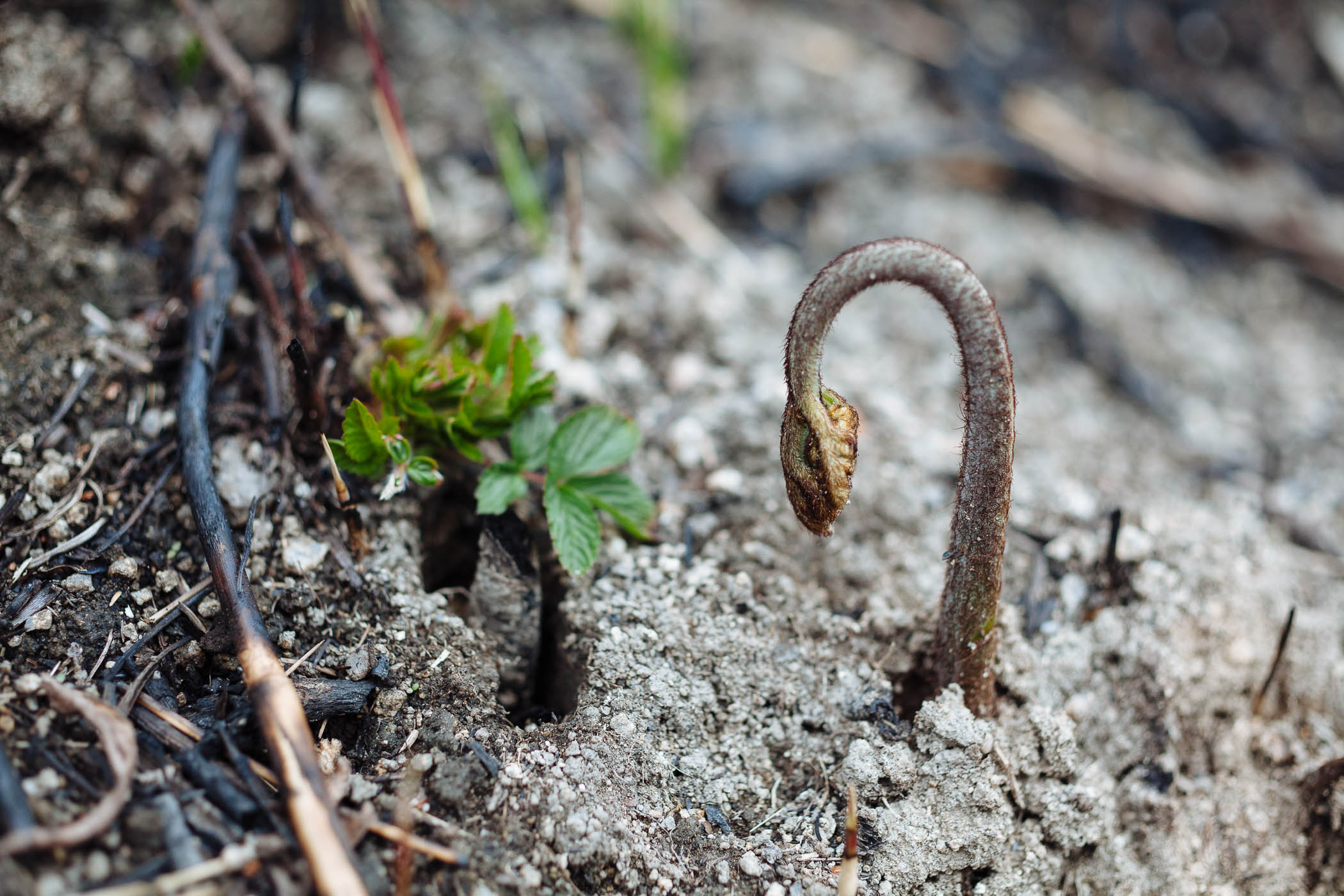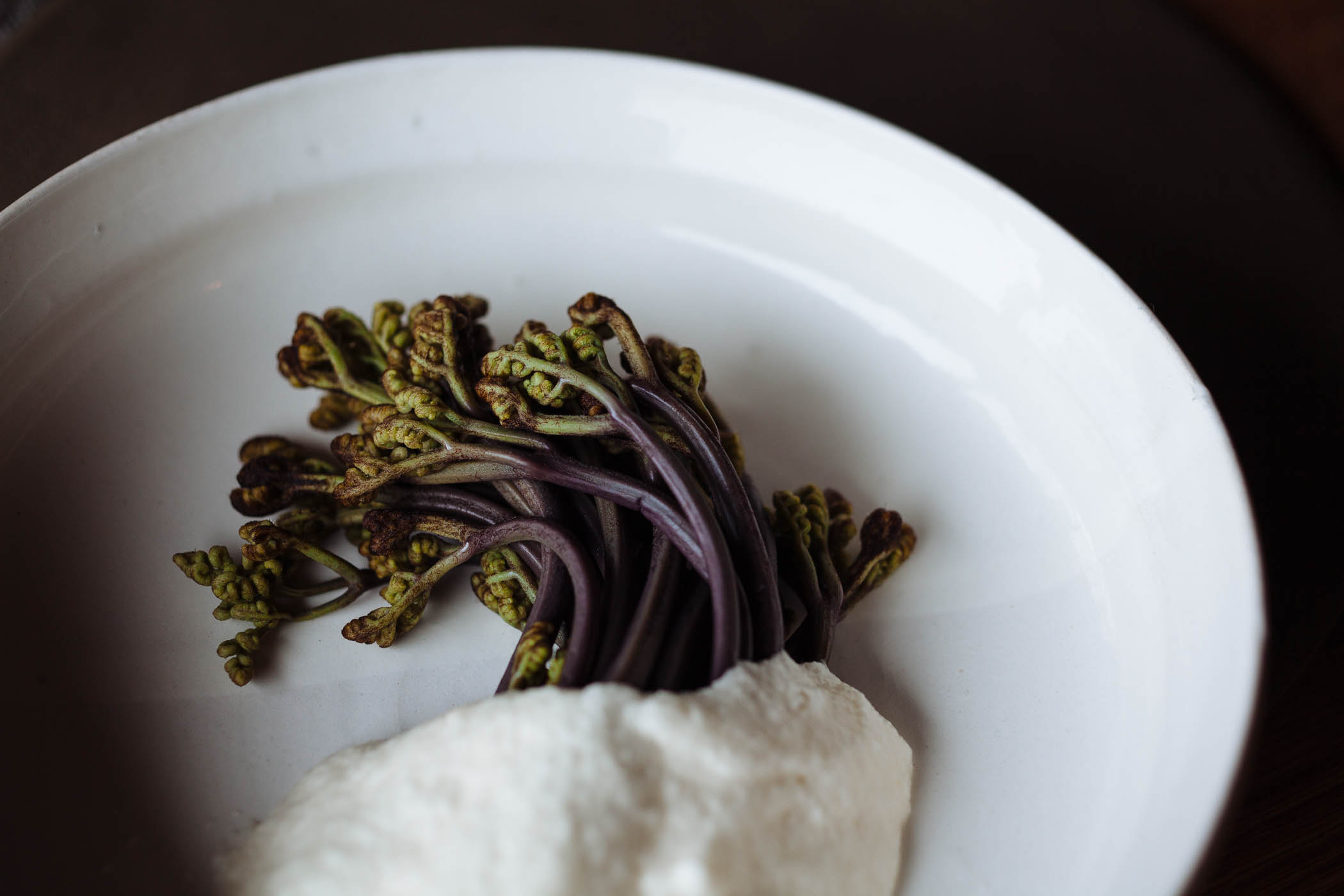Embracing the viscous textures of washoku

At the fist bite of cold in late fall, when all other flowers abandon us, the dear Camellia blooms and ushers us through a long winter. But with the dawn of summer on the horizon, the geese fly north and the Camellia bids us farewell. Gaping blossoms fall whole and heavy straight to the ground where they lie helpless, a trumpet of bright yellow stamens gasping like a fish out of water. High above, sakura petals flutter on spring zephyrs landing one by one across the yard. Paths are strewn with pink petals like so much left over confetti after the revelry has ended, the beauty tinged only by the sweet melancholy of its inevitable passing.
April ushers in the softer side of spring. We wake to the gentle patter of spring showers and a thick mist settles in Mirukashi. Petit magnolia leaves glow chartreuse against a silver scrim. The days lengthen and as the skies clear the silhouette of black pines stand tall against an inky indigo evening sky. We grasp any break in the weather and walk the country roads to gather warabi, the sprouts of bracken fern. Warabi are enticing, exotic, mysterious creatures that emerge with necks bent deep and infant fronds clasped like a raptor’s talon. For so many years I was intimidated by warabi, by talk of toxins and an almost alchemic process used to extract them. Kuniko often voiced her love of warabi but they rarely appeared at her table and I had never witnessed her prepare them. When she and Hanako came home from a walk in the hills across the way and told me of the warabi paradise they’d discovered, full of thick trunked ferns, it was clear that the time had come to set aside my suspicions and get better acquainted.
Each year the spring burn clears away the tangled carcasses of winter weeds and leaves a perfect habitat for ferns. Protected by soot-blackened spiky stalks all around and undaunted by overgrowth, they crown neck first, bowing deeply towards the ground. We collect warabi on the facing hillside and enjoy the luxury of abundance, returning home with handfuls of them at season’s peak. When they are plentiful and tender, I prefer them draped in a white pillow of grated jinenjo for a dish called tororo.
Textures known as nebaneba, translated as sticky, gluey, or gummy, and nurunuru translated as slimy, slippery, or gooey, are celebrated in Japan but tororo, or any dish made from the long tubular roots in the slimy potato family, is a challenge to the Western palate. That I’m an adventurous eater has served me well and I’ll try anything once. And for all of the myriad things that can be and are eaten in Japan, I’ve found only a handful challenging. Of those, most fall into the viscous category, including natto, raw egg, and slimy potato of all varieties. For years I would politely decline as they came around the table. But I live with a very expressive band of gourmands and for years I watched Hanako and her family slurp them up with almost rapturous delight. Year after year I’d witness them revel in these foods and desperate to know a piece of that joy, I’d try again. I can’t explain the timing but something clicked at the five year mark and within just a few months I grew immune to the sliminess of their texture and began to appreciate a whole category of foods that I had for so long reluctantly eschewed.
With this newfound appreciation I’ve grown to love warabi tororo. The fern shoots, crisp and piquant with only a lingering trace of bitterness, are served in a mellowly sweet, slippery, billowing white cloud of wild mountain yam. They say the skies will clear again tomorrow. I’ll head out one more time in search of warabi but the hills are greening and the ferns will soon leaf out telling me it’s time to set my sights on the next round of sansai, takenoko and kinome.
